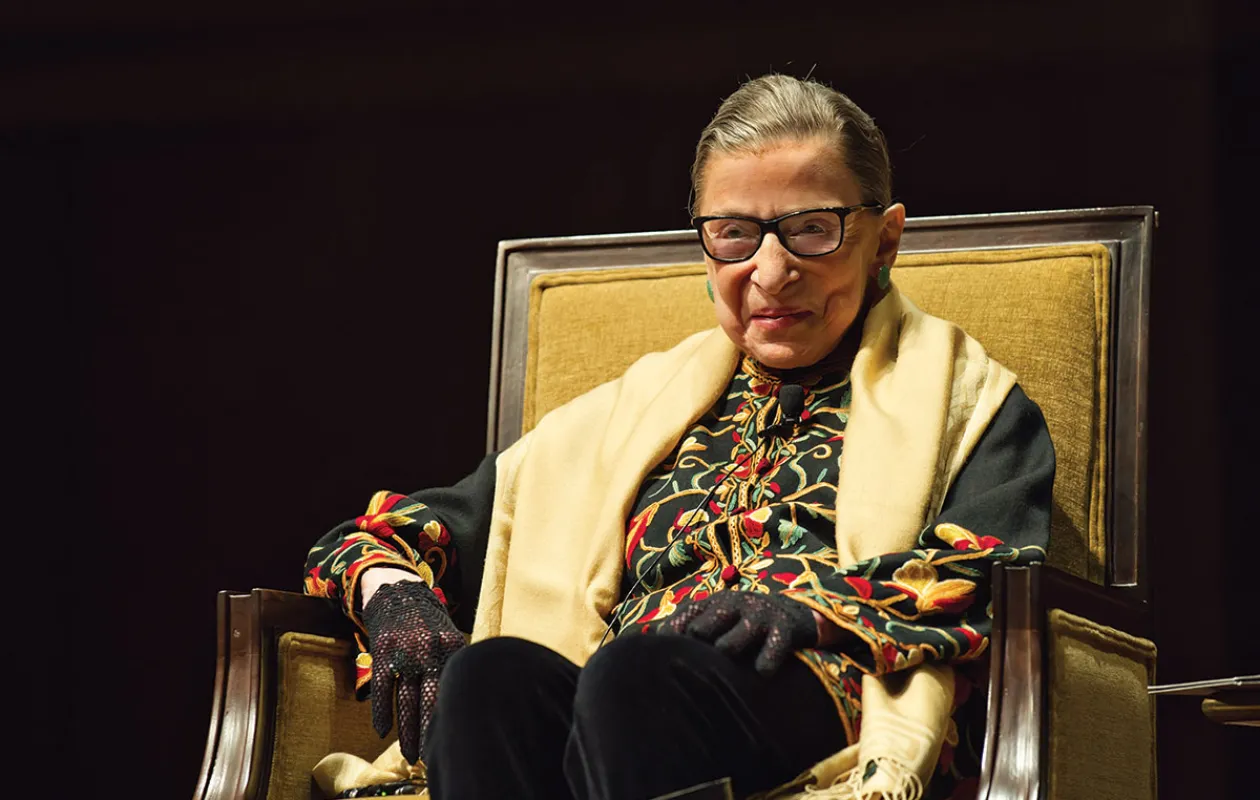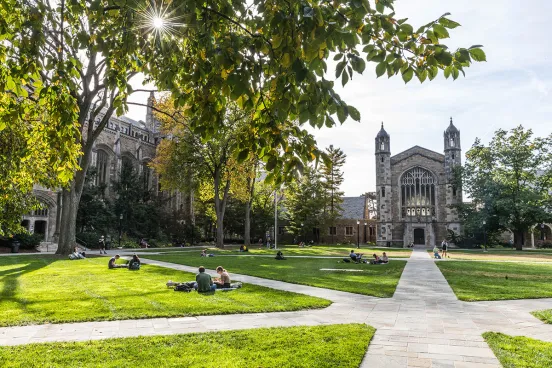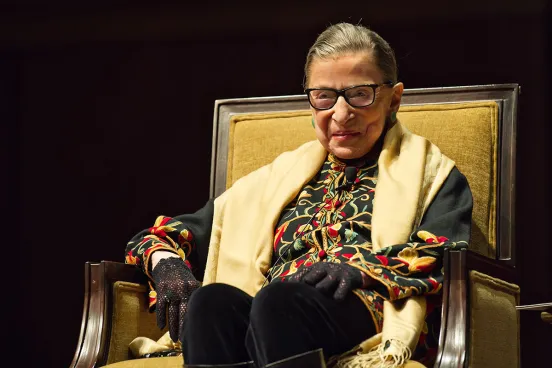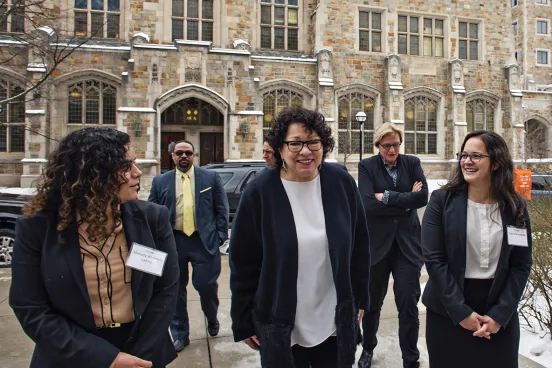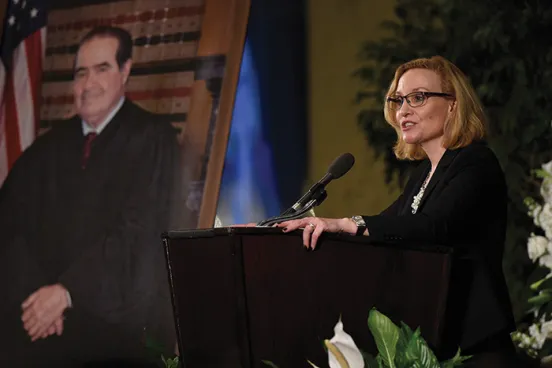The U-M Law School has five full-time faculty members who once clerked for Justice Ruth Bader Ginsburg—more than any other law school. They are among the 15 members of the Michigan Law faculty who have clerked for U. S. Supreme Court justices.
In honor of Justice Ginsburg’s visit to campus in February, we asked them about the important cases during their terms, what the justice is like as a boss and mentor, cake-and-tea parties on their birthdays, and what adjectives they would use to describe her (notorious, yes—but also many other descriptors).
Justice Ginsburg is the fifth justice to visit Michigan Law in recent years, following Justice Antonin Scalia, Justice Anthony Kennedy, Chief Justice John G. Roberts, Jr., and Justice Elena Kagan.
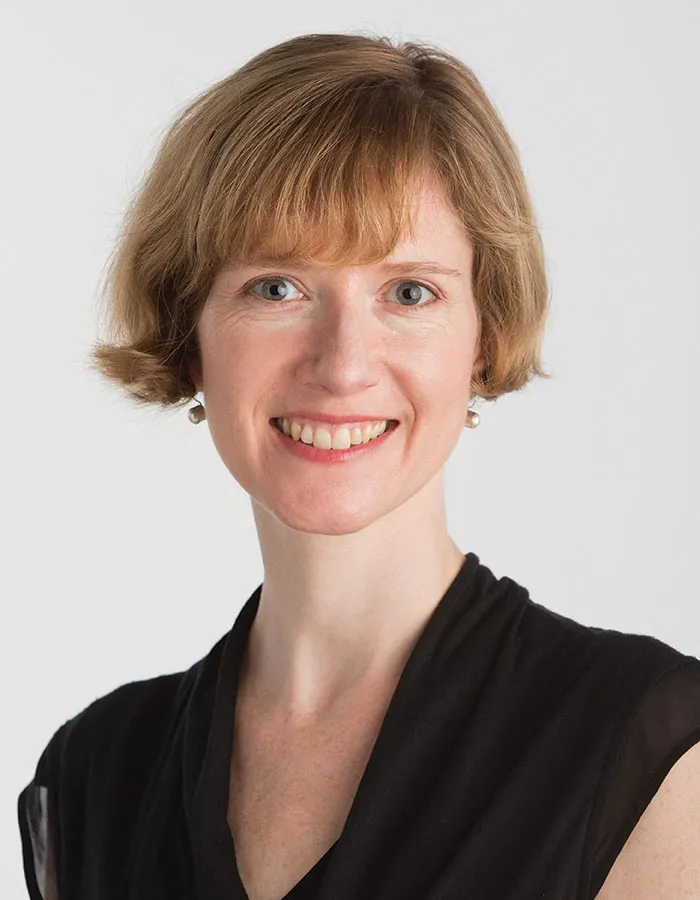
Kate Andrias
Kate Andrias, assistant professor of law, clerked for Justice Ginsburg in the 2006 term. The Court heard several well-known cases that year, including Parents Involved in Community Schools v. Seattle School District No. 1, an integration case; Gonzales v. Carhart, an abortion case; and Ledbetter v. Goodyear Tire & Rubber Co., about whether women are allowed to sue for equal-pay violations that are cumulative over time.
“The term I clerked for Justice Ginsburg was an incredibly interesting term. It was the first year that Chief Justice Roberts and Justice Alito were both on the Court for the full term, and it also happened to be a year of many 5-4 decisions.
“Justice Ginsburg is an absolutely wonderful boss. She is demanding and challenging but also warm and generous; she treated us to trips to the opera and cakes on our birthdays. Given the crush of the work at the Court, I appreciated every opportunity to pause and celebrate.
“She is a person of deep conviction; she is very committed to her values and principles of justice. At the same time, she’s extraordinarily fair. It was important to her that we give each side a balanced, thorough, and accurate representation when we were presenting memos to her about the cases.
“She is precise, meticulous, careful. She also is committed to justice, to equality, and to making sure the Court treats litigants fairly and with the respect that they’re due. And though she often seems somewhat frail sitting up there on the bench, she is as tough as nails.”

Sam Bagenstos
Sam Bagenstos, the Frank G. Millard Professor of Law, clerked for Justice Ginsburg in the 1997 term. Cases included Calderon v. Thompson, a death-penalty case; Clinton v. New York City, about whether the line-item veto was constitutional; and a series of cases involving sexual harassment.
“Justice Ginsburg aims for perfection in her work. She wants her law clerks to understand how she wants to write her opinions, so, often, opinions would go through dozens of drafts. I think Justice Ginsburg’s attention to the use of language was incredibly useful to me in learning how to write.
“I learned from Justice Ginsburg to be very exacting and very precise. What she has that too few judges have is an appreciation for great judicial craft, and also an understanding of the law in a social context. Before she came to the Supreme Court, she was a major figure in constitutional law; probably the only other person who had both a strong record of making constitutional law before the Court and on the Court is Justice Thurgood Marshall. She’s very close to being a unique figure in the law in that way.
“I’ll try to think of adjectives to describe her—but, of course, Justice Ginsburg doesn’t believe in adjectives. If you read her opinions, one of the things you’ll find—and I think she learned this at Cornell from studying writing with Nabokov—is that she believes you are most expressive with your verbs and your nouns.
“Having said that, I would say she is an incredibly warm and generous person. She is also very formal. The way she interacts with people is in some ways a throwback; it’s not the informality of the Millennial Generation. She is very exacting, and very committed to getting the right answer. She is extremely loyal and has very strong bonds with people.”

Scott Hershovitz
Scott Hershovitz is professor of law and professor of philosophy, and director of the Law and Ethics Program. He clerked for Justice Ginsburg in the 2006 term, along with Andrias (see more about the cases from that term in her entry, previous page).
“There were a lot of blockbuster cases the year that I clerked. In the school integration case from Seattle, the Supreme Court struck down the city’s desegregation plan; Justice Ginsburg was in dissent in that case. She wrote the dissent in the case about what people call ‘partial-birth’ abortion. There also was a major case about climate change, Massachusetts v. Environmental Protection Agency, about the authority of the EPA to regulate carbon dioxide emissions.
“She works very hard, and she expects her clerks to work very hard as well. I learned so much from her by watching her ask questions of attorneys and helping her make decisions. She wants everything that you give her to already be perfect, and she wants everything that goes out her door to be in perfect order.
“I’ve been greatly influenced by how she thinks about legal problems. When you clerk for any justice, I think you develop an emulator in your brain; I often think, If she were writing this, what would she say? How would she say it?
“One of my favorite memories is when we would all gather in her chambers for birthdays. Her husband, Marty, would make a cake for all the clerks’ birthdays, and we would have cake and tea in the afternoon. She also loves opera, and she frequently takes her clerks to an opera at the Kennedy Center. She’s very funny, and I think that her sense of humor often doesn’t come through in public. Her toughness is wrapped up in a very warm, kind person.”

Richard Primus
Richard Primus, the Theodore J. St. Antoine Collegiate Professor of Law, clerked for Justice Ginsburg in the 1999 term. Among the major cases that term were U.S. v. Morrison, a violence-against-women case; Apprendi v. New Jersey, which Primus describes as “the first big blow toward the end of the sentencing guidelines”; and Dickerson v. United States, which upheld Miranda.
“I learned from Justice Ginsburg about the importance of seeing the big picture when you are doing a small thing in the law. Early in my time clerking for her, I was working on a cert petition where there was an issue about jury instructions. It was clear to me that the jury instructions had gone wrong, and the justice didn’t disagree with me about that.
“But she said, here’s the problem; this connects to that, that connects to this other thing, and if we try to fix the problem with the jury instructions, we’re going to create a problem here and here, and we don’t know how to solve those things yet. So we might be better off living with this problem until we know how to fix the others that are coming. That was a really valuable lesson; she was always alert to the need to avoid making a mess elsewhere while fixing the thing that you have in view. I think that’s something that a lot of decision-makers neglect, and she has it firmly in focus.
“Every Supreme Court justice is a figure in American law, but there is only a small subset of justices who are historical figures even apart from their service on the Supreme Court. She is one of them. Had she never been on the Supreme Court, she still would have been an important figure in the history of American law.
“She has a propensity to enjoy in other people characteristics that are different from her own. She has a relatively reserved demeanor, but many of the people whom she likes most are voluble, full-color, jokey, even goofy. Her late husband, Marty, was a big, live-out-loud kind of person. I think it’s one of the things she likes about her friendship with Justice Scalia.”
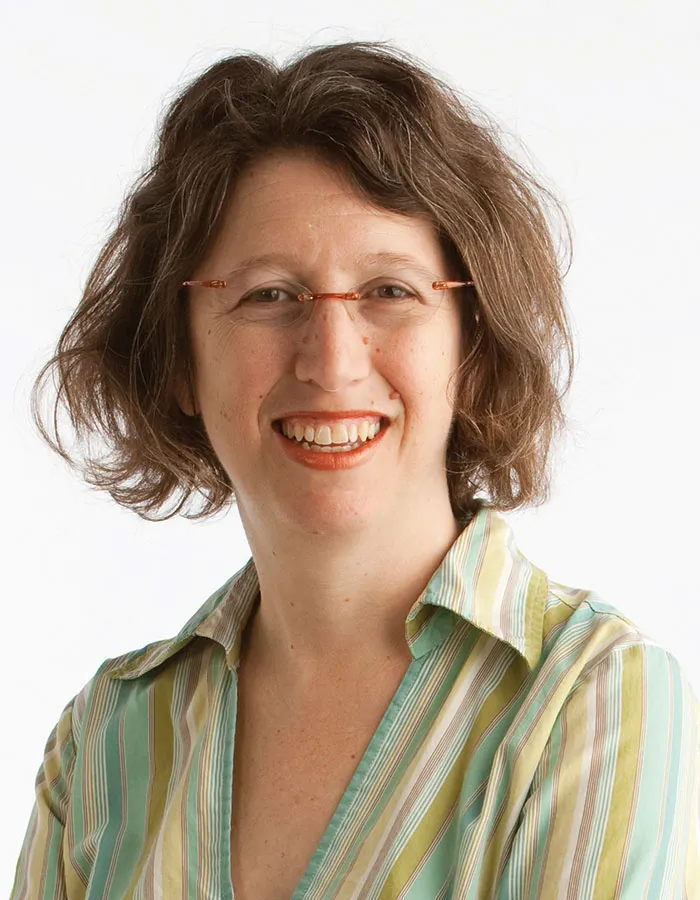
Margo Schlanger
Margo Schlanger, the Henry M. Butzel Professor of Law, clerked for Justice Ginsburg in her first two Supreme Court terms, 1993 and 1994. The terms featured several blockbuster cases, including United States v. Lopez, a Commerce Clause case, and Adarand Constructors v. Peña, an affirmative action case. Justice Ginsburg wrote her first Supreme Court opinion in Harris v. Forklift Systems, a gender-based harassment case.
“I was one of Justice Ginsburg’s first group of law clerks at the Supreme Court. Initially, I was hired by her when she was a judge on the D.C. Circuit. Right after she was nominated to the Supreme Court, I did a clerkship interview with Justice Stevens. He very kindly called her and recommended me to her; he suggested that I should stay with her for two years to provide some continuity. So that’s what she asked me to do. I started during her confirmation hearings. One of my co-clerks and I sat directly behind her during the confirmation so that the television camera background would be people who were well behaved and appropriately dressed.
“She is very much a lawyer’s lawyer; she cares a great deal about deciding the issues that are in front of her, and not other issues. She cares a lot about the coherence of the doctrine, and about reaching a result that brings to light the underlying purpose of the constitutional issue.
“RBG is an amazing presence. She is so smart, and so dedicated, and so hard-working that it sets an example for you to live up to for the rest of your career. And that starts the moment you begin clerking for her. She’s extraordinarily demanding, but at the same time she’s very humane.
“After I finished clerking for her, I played in a concert performance of The Magic Flute. She came to see it, and brought the whole chambers along with her.
“Two years after I finished the clerkship, Sam Bagenstos and I got engaged while he was clerking for her. Two other married couples who also were her former law clerks came to town, so she took her three law-clerk couples to a fancy dinner on Valentine’s Day. She got a kick out of the fact that it was partially by clerking for her that the six of us had met our life’s partners.”


